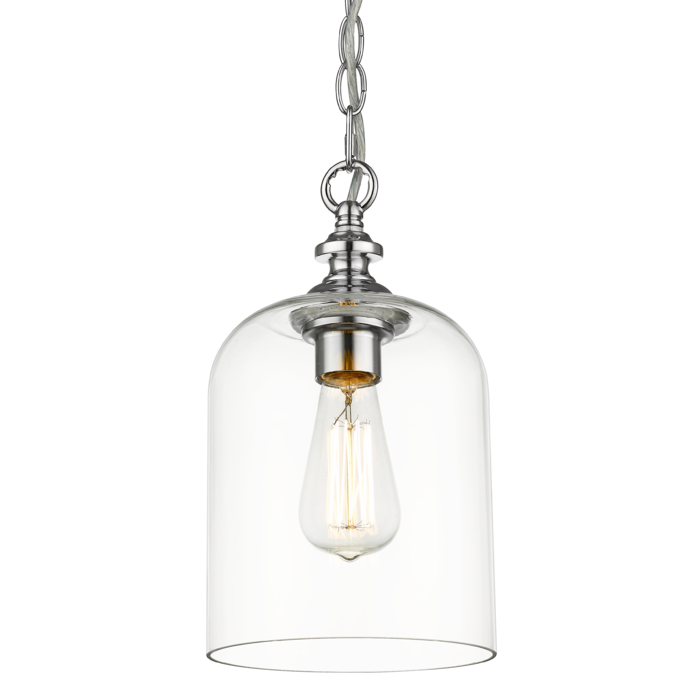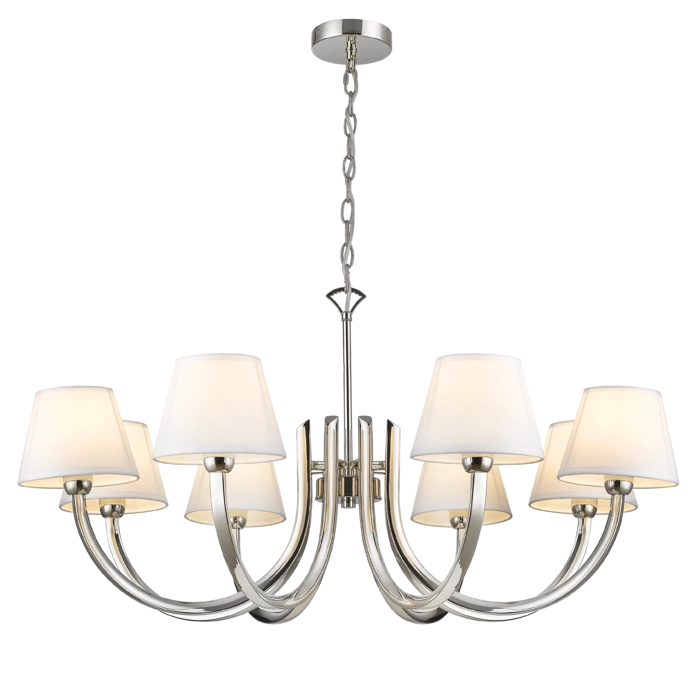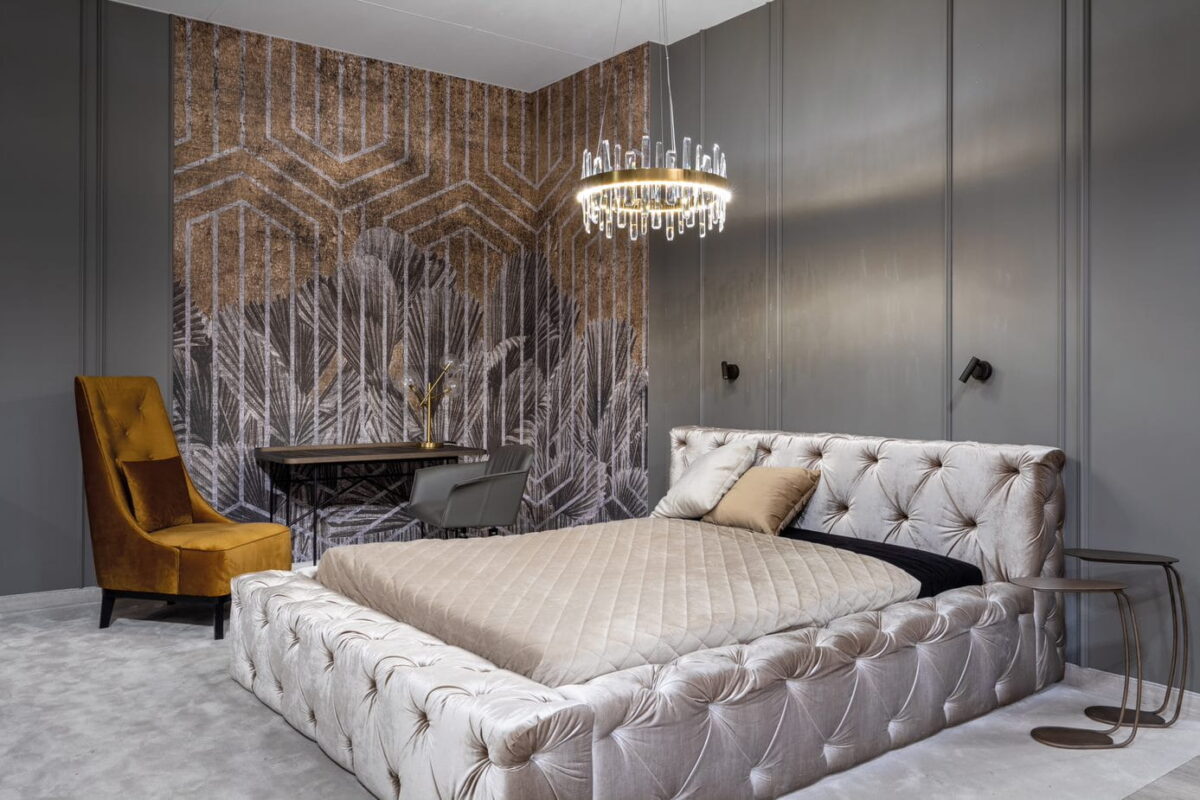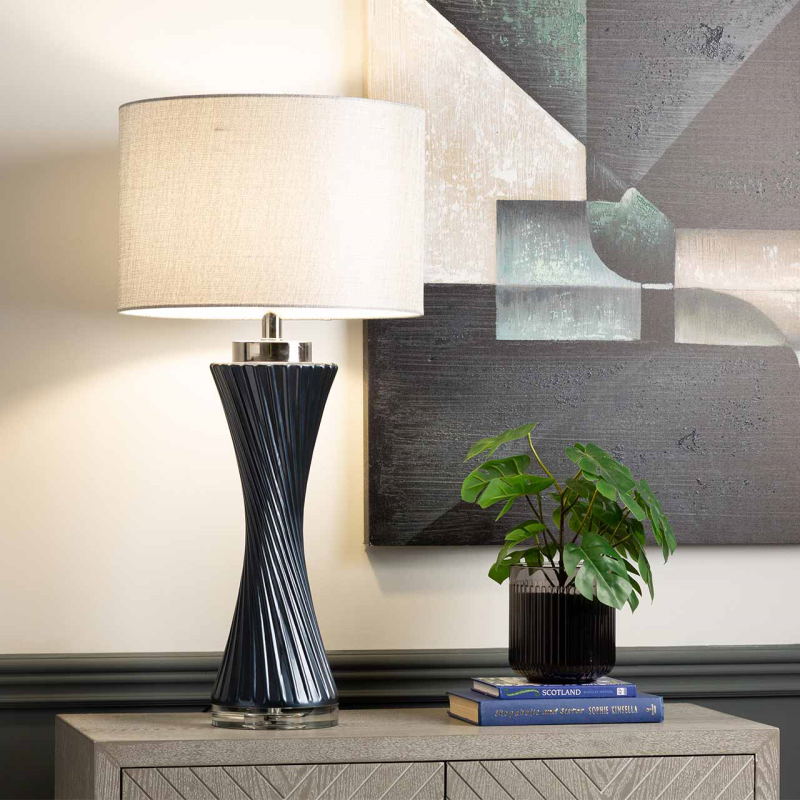Proper lighting is a key element of any interior. In addition to providing visibility, well-chosen illumination can emphasize the atmosphere of a room, enhance its aesthetics and influence our mood. However, choosing the right lamps for an interior can be a challenging task, especially when we are looking for unique and chic solutions to match our interior. In this article, we’ll take a look at the secrets of perfect lighting and give you tips on what to look for when choosing lamps. With our tips, you will have a much easier task when deciding on lighting for your interior.
Why is the choice of lighting so important?
Lighting not only affects the functions of daily life, but also shapes our mood and affects the secretion of hormones. Bright light with cool tones promotes alertness and concentration, making it an ideal choice for workplaces. Warm, subdued lighting, on the other hand, can create a pleasant, relaxing atmosphere, wrapping home rooms in a feeling of comfort and intimacy. Natural light, especially the morning rays of the sun, has even been linked to improved well-being and stress reduction.
When choosing lighting fixtures for your home, practical dilemmas also arise. Are the ceiling lamps placed at the right distance from the island or dining room table? Does the lighting in the office provide the right amount of light for work? Is the light in the bathroom too harsh and cool for quiet mornings? A carefully chosen lighting fixture can completely transform the character of a room, highlighting its architectural details, rendering colors faithfully, creating focal points of interest and shaping the desired mood.
The correct type of lighting can also expose the style of a room, highlighting its qualities. For example, in order to create a cozy and relaxing atmosphere in the living room, it is advisable to opt for warm light that will further brighten the space. In the bathroom, where visibility is crucial, it is better to choose white or neutral light to provide optimal illumination. The type of lighting also affects the functionality and ergonomics of the room. Depending on the purpose of the room, it is advisable to choose lighting that will make it comfortable to use. For example, in the kitchen it is recommended to use spot lighting, which will allow precise illumination of working areas. In the bedroom, on the other hand, it is worth betting on lighting that creates a relaxing atmosphere.
In addition, the choice of lighting can affect the cost of operating a home. Therefore, it is worth investing in energy-efficient lighting, which will reduce electricity consumption and lower electricity bills.
Analyze the needs and functions of your space
Before choosing lighting, it is worth considering what tasks the space will serve. Is it a living room, bedroom, kitchen or perhaps an office? Each of these zones has its own lighting requirements.
Start by analyzing the function of the room. Knowing what is required of a space and what functions it will serve, we can properly select lighting that will significantly affect the use of the space. Each room requires certain levels and types of lighting to create a comfortable and functional environment. By matching the lighting to the functionality of the interior, you ensure that it will not only fulfill its purpose, but also contribute to creating the atmosphere in that space. In interior design, as with any design decision, size and proportion are key. A lamp or ceiling fixture that is too large, or simply too many lamps in a room, can overwhelm a space instead of complementing it. It’s wise to start with the size of the room, and then adjust the size of the fixtures to match the proportions of the room.

Atmosphere is the most important thing in a living room, so you should invest in soft, subdued light that will create a cozy aura. In order to illuminate the entire space, large pendant lamps will work perfectly. In addition, betting on richly decorated chandeliers or lamps with lampshades, they will also fulfill decorative functions, emphasizing the style of the interior and giving it a unique character. Table or floor lamps can add a cozy atmosphere, at a time when we do not want to illuminate the entire room.
In the kitchen, intense work lighting is a priority, which will allow you to perform daily kitchen tasks comfortably. Ceiling lamps with spot lighting or LED strips under the upper cabinets will be ideal, providing adequate light on the work surfaces. In a kitchen that has an island, the following will be perfect hanging lamp, which will illuminate our entire workspace. In addition, choosing a larger ceiling lamp will illuminate the entire space, while creating a coherent composition with the rest of the equipment.


The bedroom is a space for relaxation, so it is worth betting on warm, subdued light with low intensity. Bedside lamps or soft lighting on the wall will create a pleasant atmosphere conducive to relaxation.
While the appearance and style of lamps are important, we should not forget about their functionality. When choosing lighting, we should pay attention to whether it meets our functional needs while harmonizing with the aesthetics of the interior.
Match the lighting style to your interior
It is important that the lighting harmonizes with the style of the interior. When choosing lamps, pay attention to their design and color scheme. Industrial ceiling lamps may look fantastic in modern interiors, but may not suit a classically decorated living room.






Learn about the different types of lighting
In any interior, a harmonious combination of different types of light is crucial. Layering lighting is the foundation that provides flexibility and control over the atmosphere and functionality of a space. By combining general, task and accent lighting, you create multidimensional layers that can be adapted to changing needs and moods. General lighting illuminates the entire space, while task lighting focuses on activities being performed, such as reading or cooking. Accent lighting, on the other hand, adds depth and highlights interesting interior details, architectural elements or creates a warm and welcoming atmosphere in a room.
With this layered approach, you have the ability to customize the light to suit your needs – whether it’s creating a bright, functional environment for work, a cozy, soft light for relaxation or adding an atmospheric accent during special occasions. Layered lighting also helps reduce glare and shadows, creating a cohesive and aesthetically pleasing environment that both enhances the visual appeal and usability of a room.
From the living room to the home office to the kitchen or master bedroom, every room deserves comprehensive, layered lighting that will highlight its qualities and make it functional and beautiful. Learn about the three main types of lighting :
- General lighting – also called ambient lighting, is the primary type of lighting in any room. Its main purpose is to evenly illuminate the entire space. Its main purpose is to create a comfortable and safe environment by eliminating dark corners and shadows. Ambient lighting is often achieved with different types of fixtures, such as ceiling lights, pendant lights or chandeliers. Ambient lighting sets the overall tone and mood of a room. Soft, diffused ambient light provides a backdrop against which other layers of lighting can be built, enhancing both the functionality and aesthetics of the space. It avoids harsh shadows or annoying glare, making the space cozy and welcoming. Using the ability to adjust the intensity of the lighting, such as with a dimmer, you can easily create different moods throughout the day or evening.
The types of lamps that will guarantee the general illumination of the room are:- Chandeliers – elegant hanging lamps, usually consisting of a single or multiple arms and shades arranged at different levels. Popularly used as the main source of light in the living room, dining room or bedroom.
- Ceiling lamps – are lamps attached directly to the ceiling, acting as the main source of light in various domestic spaces, such as kitchens, bathrooms or living rooms. Their placement on the ceiling provides broad illumination, evenly dispersing light throughout the room.
- Pendant lamps – are not only functional lighting, but also elegant decorative elements that add character and style to any room. Suspended from the ceiling, these lamps create a pleasant light, while giving the interior a unique look. Ideal for living rooms, dining rooms or bedrooms, pendant lamps are a harmonious combination of aesthetics and practicality, creating a cozy atmosphere in any home.
- Task lighting – is used when you want to focus light on a specific part of the room. Examples include lighting that improves visibility on kitchen countertops, or a standing lamp on a bedside table. It is recommended to place task lamps on the sides of seating areas, in the corners of the room or by consoles and sideboards. They not only serve a decorative function, but also adequately illuminate the side areas of the room. Task lighting, unlike ambient lighting, is spotlighted and used for specific tasks or activities. They are usually used in kitchens, offices and bathrooms, where precise illumination of specific areas is needed. The main purpose of task lamps is to improve visibility and reduce eye fatigue while working, reading, cooking, or performing other tasks that require close attention. The key is to provide adequate, non-stimulating light directly on the task at hand, allowing any activity to be performed comfortably and efficiently without undue eye strain.
Among them are:- Table lamps – are not only a practical source of light, but also a sophisticated element of interior design. Placed on desks, bedside tables or consoles, these lamps add elegance and character to any room. Available in a variety of styles and designs, table lamps allow you to express your individual taste and give a unique charm to any interior.
- Floor lamps – are an excellent solution when you need additional lighting in a specific area, and also add character to the entire space.
- Wall sconces – add style and ambience to an interior. Available in a variety of designs and styles, wall sconces can be both subtle and minimalist, as well as impressive and decorative, allowing them to match any interior design. In addition, wall sconces often act as accent lighting, highlighting specific architectural or decorative elements in a room.
- Plafonds – are a versatile lighting solution ideal for a variety of rooms in the home. Mounted directly on the ceiling, plafonds provide even and effective lighting that enlivens a space and ensures functionality. Their versatility makes them a popular choice for kitchens, bathrooms, hallways and other rooms where practical and aesthetically pleasing lighting is needed.
- Accent lighting serves a similar purpose to task lighting, but instead of directing light to a specific area, it is more decorative in nature. Its purpose is to create atmospheric lighting or to highlight decorative elements, such as works of art. These lights are designed to highlight special architectural features and important decorative elements, such as paintings or alcoves. We can also use them to illuminate works of art or lavish shelves. Accent lighting highlights a selected area or object, adding character and depth to a room. They not only provide adequate lighting, but also create an atmospheric atmosphere and visual interest in the space. Examples of accent lighting include track lighting that targets artwork, wall lamps that highlight the texture of wallpaper, or carefully placed floor lamps that illuminate sculptures or plants. The role of accent lighting is crucial in interior design, as it helps to highlight and distinguish elements that are meant to attract attention, while creating an attractive and complex lighting scheme.
It’s a good idea to have all of these types of lighting in every room, but their placement and positioning should be strategically tailored to how you spend your time in the space and what aspects you want to emphasize in it.
Don’t forget natural light
Natural light plays an extremely important role in optimizing lighting in the home. During the day, it is a good idea to make the most of the amount of natural light the space can offer us. You can achieve this by skillfully placing mirrors that will reflect the light coming through the windows onto other parts of the room. As an added benefit, mirrors will also reflect artificial lighting in the evenings. While it’s sometimes tempting to pull back the curtains or blinds for privacy, it’s worth looking for ways to bring more natural light into the room rather than stopping it. This may mean choosing more transparent materials that still let light through, or even dispensing with curtains or blinds in areas where it would not be a problem from a privacy perspective.
Focusing on different types of lighting fixtures, such as table lamps, chandeliers, ceiling lamps, wall sconces and others, it is important to remember that a properly selected mix of artificial light sources can completely change the character of a room. Nevertheless, the role played by natural light cannot be ignored.
Natural lighting has a tremendous impact on color perception, the feeling of space, energy consumption and the overall atmosphere in a home. When designing interiors, designers consider the orientation of windows and other sources of daylight to optimize the amount of natural light in rooms and create harmonious, aesthetically pleasing and functional interiors. The impact of natural light on interior design is complex and multifaceted, so it is worth giving it due attention when planning living spaces. When planning the layout of rooms, individual preferences and lifestyles should be taken into account. The orientation of windows and the insolation of individual living areas should be well thought out to create a comfortable environment that suits our needs and habits.
If you don’t have the opportunity to enjoy enough natural light, it’s worth taking care of the right lighting in your interior. Find out how to do this with lamps.
Pendant lamps
When choosing pendant lamps, there are several factors that are important to consider. First, it is important that the pendant lamp is placed at the right height, providing even illumination and leaving enough space for users to move freely under it. In the living room, pendant lamps can also serve a decorative function, so pay attention to decorative elements, lampshades, metal fixtures and bulbs. It is important that the intensity of the emitted light provides good visibility in all parts of the room, and the color of the light should be neutral, usually around 4000K, which contributes to creating a pleasant atmosphere.




Customize the pendant lamp to fit your interior:
- Before choosing a pendant lamp, it is worth considering the style and design of the interior. Lamps should blend in with the rest of the decor, adding character and elegance to it. For modern decor, consider minimalist, geometric lamps with a modern design. On the other hand, in rooms decorated in a classic or rustic style, lamps of traditional design with elements of wood or metal will fit better.
- Another important factor is the appropriate size of the lamp in relation to the room. A lamp that is too small can appear disproportionate, while one that is too large can overwhelm the interior. A good practice is to choose a lamp with a diameter no larger than half the width of the table or the height of the room. It’s also a good idea to remember to keep appropriate distances from walls and furniture to avoid the effect of an overly cramped or crowded interior.
- The proper placement of the pendant lamp in the room is also an important factor. Lamps should be hung at the right height to provide even illumination and avoid glare. For a kitchen table or island, lamps should be hung at a height that allows you to work freely without blocking visibility.
Chandeliers
Among the various lighting options, chandeliers are not only a source of light, but also an important decorative element, adding character and elegance to any room.
Before deciding on a chandelier, it is worth considering the style and character of the interior in which it will be placed. Chandeliers come in a variety of styles, from classic to modern, from minimalist to richly decorated. The choice should be consistent with the overall design of the room, adding harmony and aesthetics to it.
An important aspect is the proper placement of the chandelier in the room. The chandelier should be hung at the right height to provide even illumination and avoid glare. Attention should also be paid to the placement relative to other design elements, such as furniture or other light sources.




Table and floor lamps
Before deciding on a table lamp, it is worth considering the style and character of the interior in which it will be placed. Table lamps come in a variety of styles, from classic to modern, from minimalist to richly decorated. The choice should be consistent with the overall design of the room, adding harmony and aesthetics to it.
Table lamps illuminate a specific area, such as a reading or work area, and table lamps illuminate decorative objects, highlighting their beauty and uniqueness. Choosing the right design and materials, such as wood, metal, glass or ceramic, affects not only the aesthetics, but also the functionality and durability of the lamp. It is advisable to choose a model that harmoniously blends with the rest of the room’s decor and provides high quality workmanship.




Wall lamps
Wall lamp is more than just a source of light – it is a subtle decoration that can transform the appearance of any room. Choosing the right wall lamp will not only emphasize the character of the interior, but also affect its functionality and atmosphere. The first step in selecting a wall lamp is to understand the style and character of the interior in which it will be located. Is your interior modern and minimalist, or more classic and elegant? Choose a wall sconce that will blend harmoniously with the overall design of the room, adding to its unique character. In the case of richly decorated interiors, the following will work well classic wall lamps with a traditional lampshade.
Avoid sconces that are too large or too small, which can upset the balance of the space. Choose a model that is proportional to the size of the room and balances its arrangement accordingly.
Pay attention to the function of the room where you want to hang the wall lamp. Choose a wall sconce that will suit the interior and aesthetic preferences, providing optimal lighting conditions.




6 key factors to consider when planning lighting:
- Layered lighting: Create a harmonious combination of ambient, task and accent lighting to achieve differentiated layers of light in a room. Ambient lighting diffuses general light, task lighting makes it easier to perform specific activities such as reading or working, and accent lighting adds subtle charm.
- Dimmers: Install adjustable dimmers to adjust lighting intensity and create different atmospheres throughout the day.
- Energy efficiency: Choose lighting fixtures that are energy efficient, such as LED bulbs, to reduce operating costs and care for the environment.
- Functionality: Identify the main activities performed in a room, such as reading, cooking, relaxing or working, and adjust the type of lighting to meet their needs.
- Bulb selection: Choose bulbs with the right color, temperature and brightness to create the desired atmosphere inside. Warm white light bulbs create a cozy mood, while those with a cool white color lend energy.
- Proper placement: Place light fixtures in strategic locations to avoid glare and unwanted shadows. For example, avoid placing a lamp next to a TV to avoid glare, and position table lamps at the right height to avoid casting shadows on the faces of those sitting on the couch.
In conclusion, the selection of appropriate lamps for a room is a key element in the design of any interior. By following the above tips, we will be able to choose lamps that not only perform their functions perfectly, but also become unique decorative elements that emphasize the individual character of our interior.

